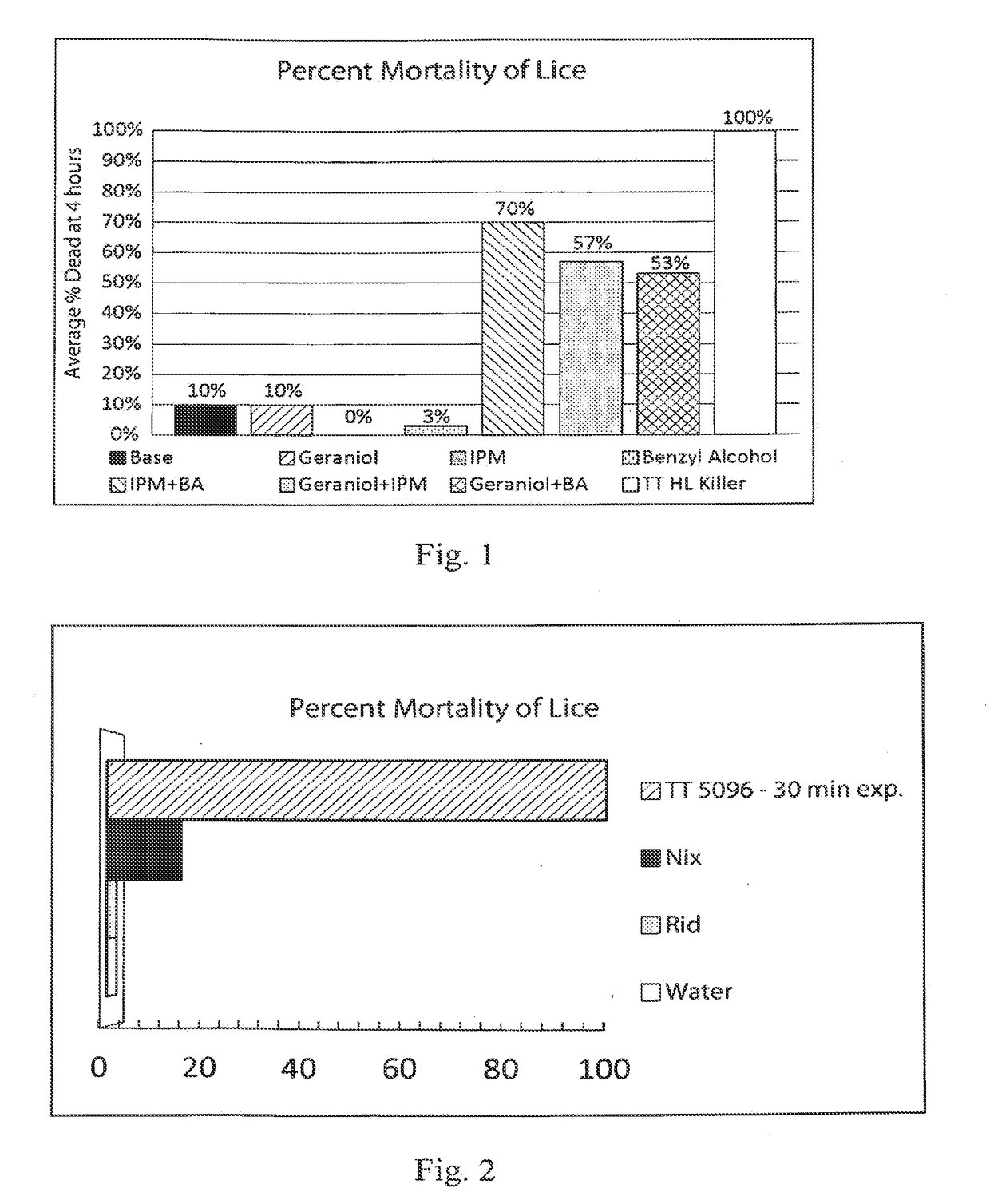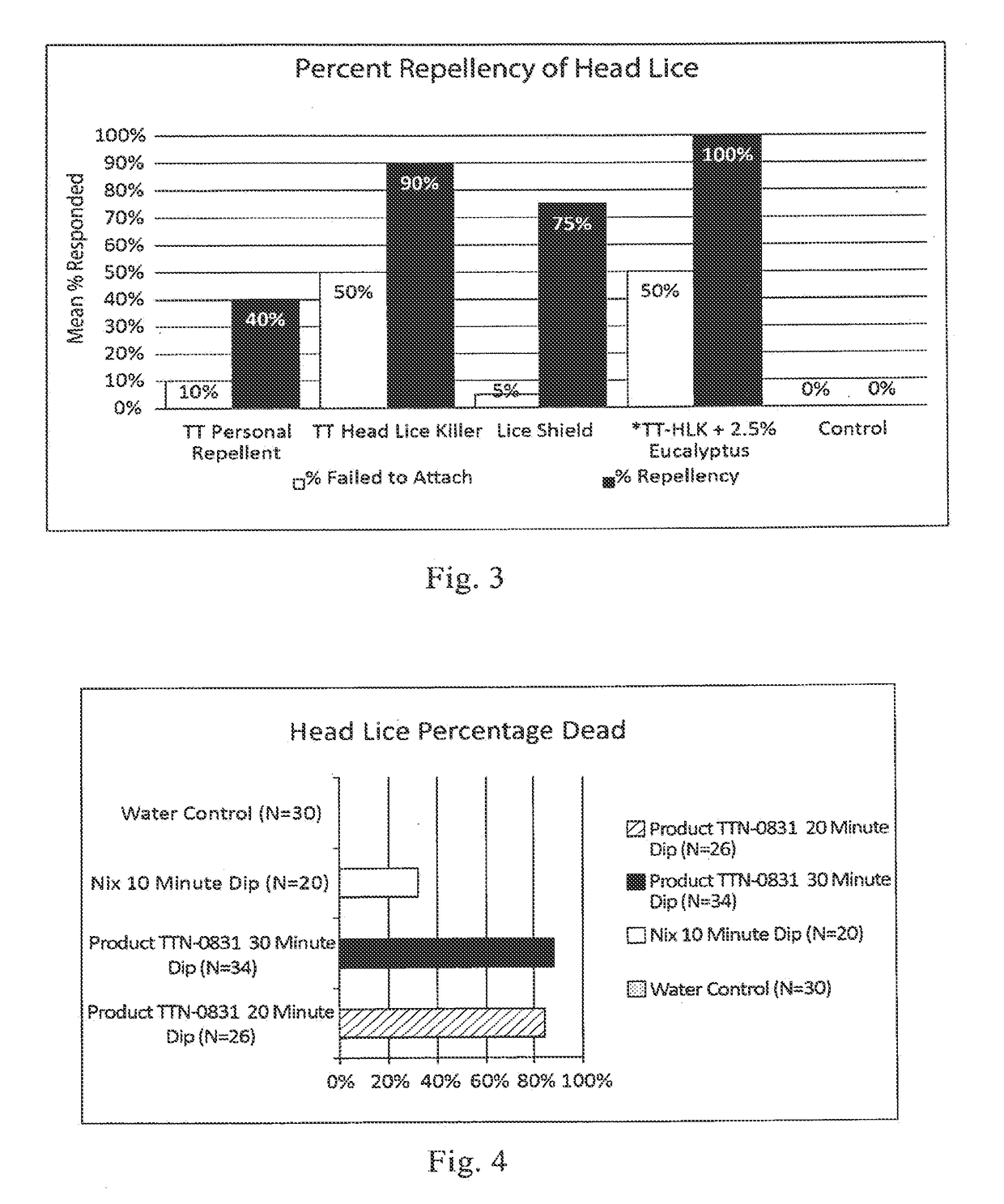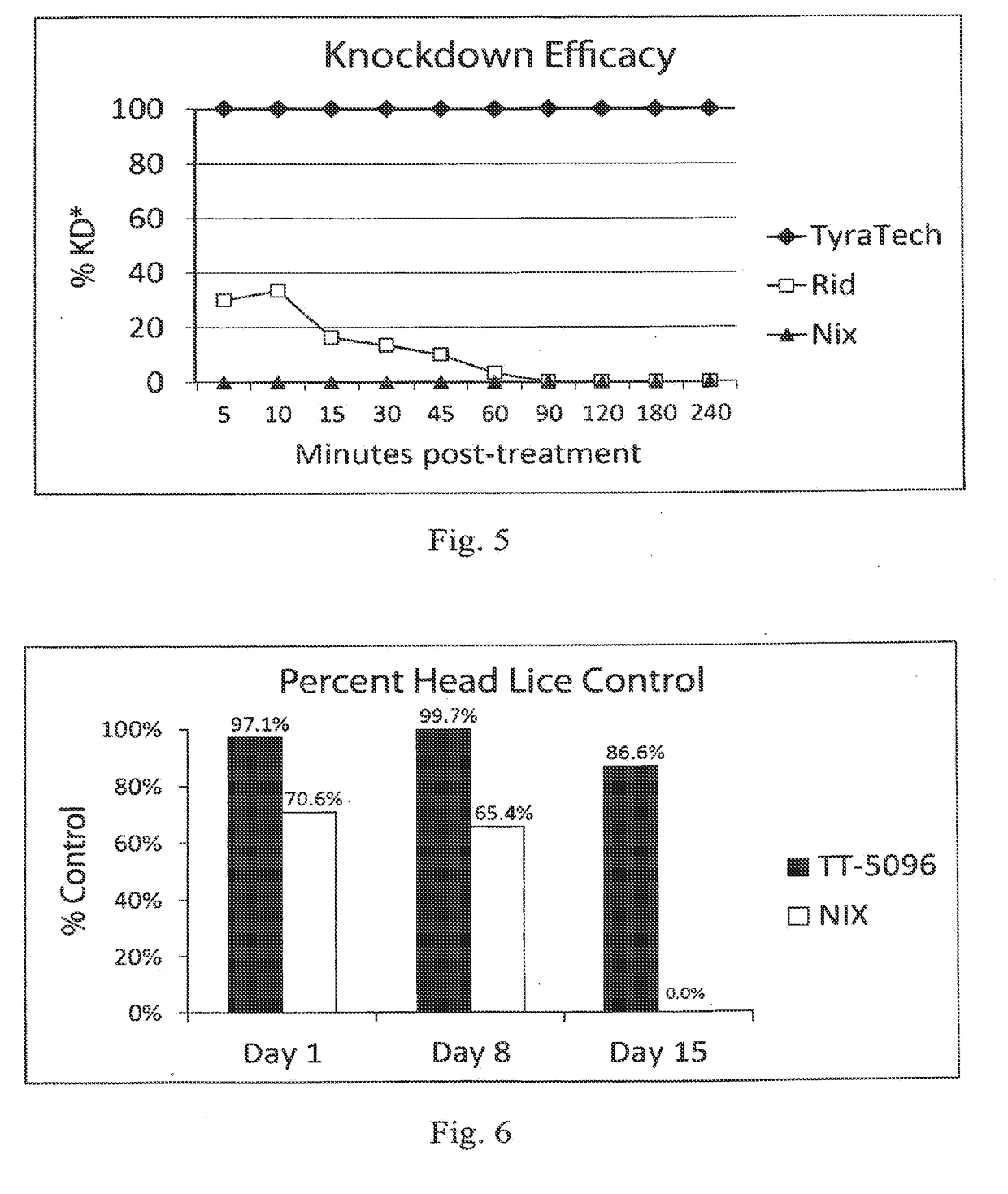Lice control composition and method
a technology of composition and method, applied in the field of control of arthropods, can solve the problems of small red bumps on the scalp, neck or shoulders, presence of nits (eggs, no treatment is considered 100% effective, often requiring repeat treatment, etc., and achieve the effect of reducing motility
- Summary
- Abstract
- Description
- Claims
- Application Information
AI Technical Summary
Benefits of technology
Problems solved by technology
Method used
Image
Examples
example 1
Mode of Action Study
[0135]Assay was designed to test the mortality of products against all stages of head lice using a standard dip method protocol, as described in this Example 1. Head lice were collected from patients and put into moist filter paper lined petri dishes. 10 head lice per replication were treated, rinsed, and evaluated. The procedure was repeated 3 times and evaluated at 1.0, 2.0, 3.0, and 4.0 hours. Time of death was recorded when all movement and peristalsis of the gut ceases.
[0136]Target species: Pediculus humanus capitis (Head Louse). Test Species per replication: 10 lice. Dip bioassay (6 ml of solution) with 15 minute exposure to treatment. Mortality was assessed at one, two, three, and four hours post-treatment. Treatments were performed during the daytime, between 10 am and 4 pm. Death was the evaluation parameter. Minimum number of replicates: 20.
[0137]The collecting technicians washed their hands with antibacterial soap and rinse in clean tap water, followed...
example 2
Average Percent Mortality at 4 Hours Post-Treatment
[0142]Three treatment groups plus a water control: (1) TyraTech mousse: 2.5% (TT5096); (2) RID® Lice Killing Shampoo: 0.33% pyrethrins / 4% PBO; (3) NIX® Lice Treatment Crème Rinse: 1 permethrin. Standard dip method protocol, as described in Example 1, with ten minute or 30 minute exposure, after which there was a water rinse. Ten lice / replicate (5 adults, 5 immatures). Three replicates per treatment. Final KD and mortality evaluated at 4 hours post-treatment. Pyrethroid / permethrin-resistant head lice collected from human subjects and tested within 30 minutes. TyraTech's mousse formulation provided 100% mortality of insecticide resistant head lice when exposed for 30 minutes vs. 0% for the market leaders RID® and 13% for NIX®. See FIG. 2.
example 3
Head Lice Repellency Using Treated Human Hair Tuffs
[0143]Human hair bundle bioassay. Assay was designed to test the repellency of products against all stages of human head lice. Human head lice are collected from patients and and randomly placed into filter paper lined petri dishes. Tuffs of hair 3-4 mm thick are treated and held in front of a running louse. The procedure is replicated 20 times at a designated time period. It was noted whether the louse grab onto the hair and measure how far it traveled up the tuff.
[0144]Target species: Pediculus humanus capitis (Head Louse). Twenty Test Species per replication. Dip method used with 30 second exposure time. Treatment time was during the day, between 10 am and 3 pm. Evaluation parameters: Percent failure to attach and percent repellency. Minimum number of replicates: 20. Evaluation time points: 1 hour.
[0145]The collecting technicians washed their hands with antibacterial soap and rinsed in clean tap water, followed by a rinse in 70% ...
PUM
| Property | Measurement | Unit |
|---|---|---|
| diameter | aaaaa | aaaaa |
| temperature | aaaaa | aaaaa |
| thick | aaaaa | aaaaa |
Abstract
Description
Claims
Application Information
 Login to View More
Login to View More - R&D
- Intellectual Property
- Life Sciences
- Materials
- Tech Scout
- Unparalleled Data Quality
- Higher Quality Content
- 60% Fewer Hallucinations
Browse by: Latest US Patents, China's latest patents, Technical Efficacy Thesaurus, Application Domain, Technology Topic, Popular Technical Reports.
© 2025 PatSnap. All rights reserved.Legal|Privacy policy|Modern Slavery Act Transparency Statement|Sitemap|About US| Contact US: help@patsnap.com



